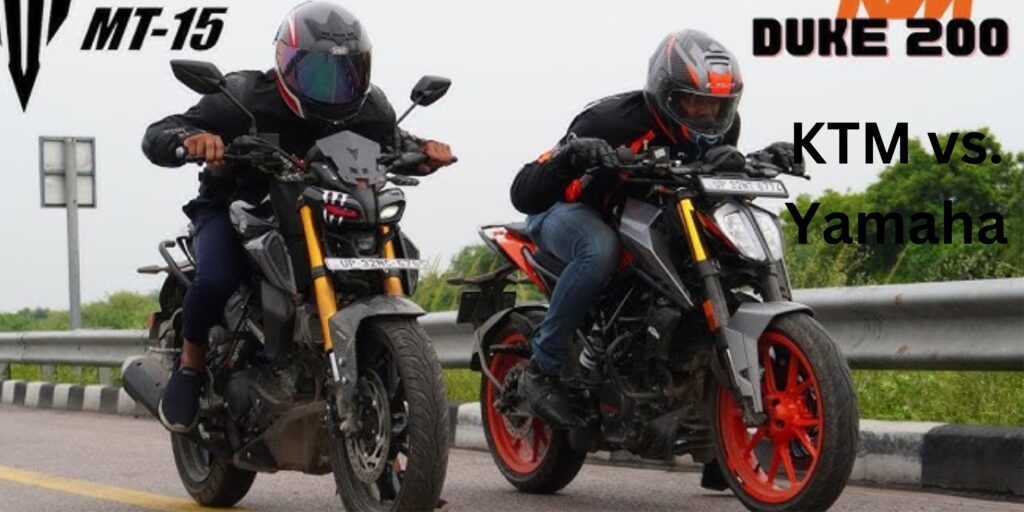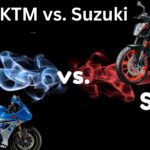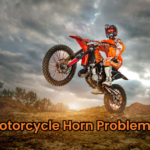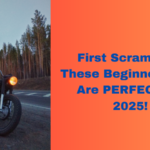Hello there, fellow rider! I’m thrilled to have you join me on this in-depth journey comparing two of the most talked-about motorcycle brands in the industry—KTM vs Yamaha. As an expert content strategist and SEO specialist with years of riding experience, I know how important it is to grasp the details of each brand. Whether you’re an adrenaline junkie seeking off-road excitement or a commuter wanting reliable street performance, you deserve a bike that fits your needs perfectly.
In today’s article, we’re diving deep into 21 essential factors—from bike power to resale value—that will help you make an informed decision. By the end of our discussion, you’ll have a clear picture of which brand aligns with your riding style and lifestyle. So, buckle up (or helmet on!), and let’s throttle into the details!
Hello again, rider! I remember the first time I had to choose between two bikes—my heart pounded with excitement and uncertainty in equal measure. I dug deep into specs, took test rides, and even chatted with seasoned enthusiasts before deciding. Today, I want to share that journey with you.
Imagine this: You’re standing at the crossroads, torn between the explosive power of KTM and the reliable finesse of Yamaha. Which one will give you that perfect mix of performance, comfort, and lasting quality? Our exploration today will arm you with the insights to answer that question confidently.
By dissecting every crucial factor—ranging from engine longevity to off-road capability—we’ll empower you to make a decision that not only meets your technical requirements but also resonates with your personal style. Let’s jump right in!

1. How Does Bike Power Compare Between KTM and Yamaha?
When it comes to raw bike power, both KTM and Yamaha offer machines that can satisfy even the most discerning riders. However, they deliver power in noticeably different ways.
KTM’s Instantaneous Power
- Explosive Acceleration: KTM is renowned for its immediate throttle response. Their bikes are built to deliver that instant surge of adrenaline when you twist the throttle.
- Off-Road Dominance: Especially for off-road enthusiasts, KTM’s high-power output makes tackling rugged terrains a thrilling experience.
- Real-World Example: I once took a KTM off-road model on a twisty forest trail—the instant burst of power was simply exhilarating!
Read more:
Yamaha’s Smooth Power Delivery
- Consistent Performance: Yamaha offers power that builds steadily, providing a smooth and controlled acceleration.
- Beginner-Friendly: This reliable power delivery is particularly advantageous if you’re new to riding or prefer a more relaxed experience.
- Quick Tip: If you value predictability over sudden bursts, Yamaha might be your go-to option.
WARNING: Don’t be swayed solely by horsepower numbers! How power is delivered is just as important as the raw figures.
2. What About Engine Longevity?
The engine is the heart of any motorcycle, and its longevity is a critical factor to consider.
Yamaha’s Durability and Reliability
- Proven Track Record: Yamaha engines are celebrated for their long-lasting performance with routine care.
- Less Maintenance Worries: Owners often report fewer issues over extended use, making Yamaha a dependable choice for everyday riders.
KTM’s High-Performance Trade-Off
- More Maintenance: While KTM engines offer remarkable power, the high stress levels can lead to more frequent servicing.
- Enthusiast’s Choice: For those who love high-performance rides and don’t mind a little extra upkeep, KTM remains a favorite.
Personal Insight: I’ve owned both types of engines, and while Yamaha always gave me peace of mind on long rides, KTM’s raw performance added an edge of excitement that was hard to resist.
3. Are They Off-Road Ready?
For riders who crave dirt tracks and rugged terrains, off-road suitability is non-negotiable.
KTM’s Off-Road Agility
- Responsive Handling: KTM bikes are built with lightweight frames and superior suspension systems, making them highly responsive on off-road trails.
- Trail-Ready: Their design ensures quick maneuverability, essential for tight corners and unpredictable surfaces.
Yamaha’s Versatile Approach
- Balanced Performance: While Yamaha is excellent on the street, many of their off-road models still deliver solid performance across various terrains.
- User-Friendly: The smooth handling of Yamaha bikes makes them appealing even for those who are venturing off the beaten path for the first time.
Quick Tip: If you plan to do intense off-road riding, lean toward KTM for its agile handling. However, if you need a bike that’s equally adept at street and light off-road conditions, Yamaha is a solid choice.
[Insert Image Here: Off-Road Adventure – KTM vs Yamaha]
4. How Do Motorcycle Insurance Costs Stack Up?
Long-term costs can be a deal-breaker. Motorcycle insurance is one such factor where brand characteristics play a role.
Yamaha’s Cost-Effective Insurance
- Budget-Friendly Options: Yamaha’s range of beginner to mid-range bikes generally attracts lower insurance premiums.
- Reliability Factor: The durability and widespread availability of parts also contribute to lower overall insurance costs.
KTM’s Premium Appeal
- High-Performance Premium: KTM’s high-powered models often come with higher insurance premiums due to their performance features.
- Niche Market Impact: Specialty bikes sometimes incur extra costs from insurance providers because of their unique repair needs.
Remember: Your personal riding record, location, and bike model all influence the final insurance quote.
5. Which Brand Excels in Street Riding?
Street riding demands a different set of features—comfort, convenience, and consistent performance.
Yamaha’s Street Credibility
- Commuter-Friendly: Yamaha is often praised for its comfortable ride and practical features that cater to daily commuting.
- Balanced Dynamics: The blend of smooth power delivery and reliable braking systems makes Yamaha ideal for city traffic and long-distance cruising.
KTM’s Sporty Edge on the Streets
- Sporty Design: KTM bikes, with their aggressive styling and spirited performance, are often favored by those who love a bit of extra kick on urban roads.
- Adrenaline Rush: Their quicker acceleration and sportier feel might appeal more to thrill-seekers.
Personal Experience: I’ve navigated busy streets on a Yamaha and felt the calm assurance of its stability. However, switching to a KTM for a weekend race track event showcased a completely different adrenaline-fueled experience.
6. Do Their Aesthetics Suit Your Style?
Aesthetics may be subjective, but they’re a key part of the overall riding experience.
KTM’s Bold and Vibrant Look
- Ready-to-Race Vibe: KTM’s design language emphasizes bold colors and aggressive styling that scream performance.
- Stand-Out Factor: If you want a bike that makes a statement, KTM’s dynamic aesthetics might be just what you’re looking for.
Yamaha’s Classic and Polished Appeal
- Timeless Design: Yamaha tends to favor a sleek and refined appearance, exuding reliability and sophistication.
- Subtle yet Striking: Their classic color schemes and well-balanced design ensure that the bike looks as good as it performs.
Quick Tip: Consider how much the bike’s look influences your riding experience. A bike that resonates with your personality can boost your confidence on every ride.
7. How Reliable Are They?
Reliability is a cornerstone when investing in a motorcycle. Let’s delve into how each brand fares.
Yamaha’s Dependability
- Reputation for Durability: Yamaha consistently scores high in reliability studies. Their engineering and design are geared toward long-term performance.
- Global Trust: Many riders worldwide rely on Yamaha for its dependable performance and minimal downtime.
KTM’s Evolving Reliability
- Improving Standards: KTM has made significant strides in reliability, especially in their latest models. However, high-performance models may still require meticulous care.
- Passionate Community: Despite occasional maintenance demands, many KTM enthusiasts swear by their bikes’ performance and are loyal to the brand.
My Take: While Yamaha’s reputation for reliability is rock-solid, KTM’s performance-driven design offers its own set of unique benefits. Your decision may ultimately rest on your willingness to invest time in maintenance.
8. What Is Their Lifespan Like
When you’re choosing a bike, knowing how long it will serve you is critical.
Yamaha’s Longevity
- Engineered for the Long Haul: Yamaha motorcycles are known for their extended lifespan, often delivering consistent performance for years with proper maintenance.
- Resale Value: Their reputation for durability also means better resale value over time.
KTM’s Durable Yet Demanding Nature
- Performance Over Time: KTM bikes, while incredibly powerful, might show signs of wear faster if not maintained properly.
- Lifespan with Care: With regular maintenance, KTM motorcycles can also achieve a long lifespan, though they might require more attention than their Yamaha counterparts.
Warning: Skimping on routine maintenance can significantly reduce the lifespan of any bike, regardless of the brand.
9. How Accessible Are Spare Parts and Servicing?
Access to spare parts and ease of servicing can make or break your ownership experience.
Yamaha’s Extensive Service Network
- Global Reach: Yamaha’s widespread global presence means that spare parts and service centers are readily available.
- Cost-Effective Repairs: The ease of obtaining parts often translates to lower repair and maintenance costs.
KTM’s Specialized Servicing
- Niche Requirements: KTM bikes sometimes require specialist service due to their unique design and high-performance parts.
- Availability Challenges: In some regions, finding the right parts can be a challenge, and repairs may be pricier.
Quick Tip: Check with your local service centers to see which brand offers more convenience in your area before making a final decision.
10. How Effective Are Their Braking Systems?
Safety is paramount. The braking system of your bike is a critical safety feature.
KTM’s Brembo Brakes
-
- Superior Stopping Power: KTM often uses Brembo brakes in its models. They offer strong and precise performance.
- Off-Road and Track Ready: These brakes deliver reliable stopping power. They excel in tough conditions, boosting your confidence on rugged trails.
Yamaha’s Nissin Brake Systems
-
- Smooth and Progressive: Yamaha’s Nissin brakes provide gentle, reliable braking. This is perfect for beginners and seasoned riders alike.
- Consistent Performance: Though less aggressive than Brembo, they offer predictable and steady performance.
11. Which Offers Better Price and Value?
Price isn’t just about the upfront cost—it’s also about long-term value.
Yamaha’s Budget-Friendly Appeal
KTM’s Premium Pricing
- High-End Components: KTM models often come with advanced features and cutting-edge technology, which can justify a higher price tag.
- Investment in Performance: While the upfront cost may be higher, the performance and innovative design could pay dividends if that’s what you value most.
Internal Link Suggestion: [Internal Link: How to Evaluate Motorcycle Value Over Time]
12. How Does Build Quality Compare?
Build quality reflects the craftsmanship and attention to detail in every motorcycle.
KTM’s Engineering Excellence
- Precision Craftsmanship: Originating from Austria, KTM’s engineering is meticulous. Their bikes are built to endure extreme conditions, especially on the off-road circuit.
- **Innovative Designs:** KTM bikes stand out because of their strong materials and modern design techniques..
Yamaha’s Consistent Quality
- Timeless Reliability: Yamaha is known for its strong build quality. This means every bike lasts and performs well over time.Refined Finishes: With a focus on sleek aesthetics and structural integrity, Yamaha bikes are built to stand the test of time.
13. Do Their Color Offerings Express Your Personality?
Your bike is an extension of your personality, and color choices play a big role in that.
KTM’s Bold Color Palette
- Vibrant Options: KTM offers an array of bright, bold colors that catch the eye and exude energy.
- **Customizable Appeal:** Choose a bold orange or a sleek black. KTM’s colours let you express yourself.
Yamaha’s Classic Hues
- Iconic Schemes: Yamaha often sticks with classic blues, whites, and blacks that are both timeless and sophisticated.
- Subtle Sophistication: The traditional color choices give Yamaha a refined look that many riders appreciate.
14. What About Body Work and Aerodynamics?
The design of your bike isn’t just about looks—it affects performance, speed, and control.
KTM’s Aggressive Aerodynamics
- Sharp Angles: KTM’s bodywork looks great and boosts aerodynamic performance, especially at high speeds.
- Enhanced Stability: The design helps riders keep control during aggressive rides on tracks and off-road trails.
- Wind Resistance Management: Yamaha reduces drag with smooth bodywork, allowing for faster cruising.
- Balanced Performance: This smart design keeps the bike stable and fast while ensuring rider comfort.
15. How Comfortable Are the Seats and Positioning?
Long rides can be taxing, so comfort should never be overlooked.
Yamaha’s Ergonomic Approach
- Upright Seating: Yamaha bikes are known for their comfortable seats and upright riding positions that reduce fatigue on long journeys.
- Adjustability: Many Yamaha models offer adjustable seating options to suit a variety of rider heights and body types.
KTM’s Sporty Stance
- Performance Over Comfort: KTM’s seat design focuses on aggressive riding. It promotes a forward-leaning position that boosts control and performance.Trade-Off Consideration: This setup works well for sporty rides. However, it might not be as comfy for long commutes or tours.
When you’re zipping through traffic or tackling twisty trails, handling is everything.
KTM’s Nimble Maneuverability
- Feather-Light Frames: KTM’s engineering focuses on quick responsiveness, making these bikes extremely agile in off-road conditions.
- Suspension Excellence: Their top-notch suspension systems absorb bumps and allow for precise cornering.
Yamaha’s All-Terrain Versatility
- Balanced Handling: Yamaha strikes a balance between comfort and control, making their bikes adept in both urban and rural settings.
- Predictable Dynamics: This predictability in handling is a big plus for riders who prioritize safety and ease of use.
Quick Tip: Test ride both brands if possible. The “feel” of the bike can only be judged once you’re in the saddle!
17. Who Leads in Cutting-Edge Technology?
Technology is constantly evolving, and both brands have invested heavily in innovation.
KTM’s Technological Prowess
-
- State-of-the-Art Features: KTM uses advanced ABS systems and smart engine management. These high-tech features boost performance and safety.
- **Track-Ready Innovations:** KTM uses the latest racing tech. This makes their bikes favourites among performance fans.
Yamaha’s Continuous Evolution
-
- Innovative Enhancements: Yamaha has led with technologies like variable valve timing and electronic fuel injection. These features create a smooth riding experience.
- User-Centric Controls: Their systems focus on rider comfort and ease of use. This design makes for a more intuitive experience.
- Personal Note:* I admire KTM’s drive for tech advancement, but Yamaha’s consistent, user-friendly updates ensure every rider feels included.
18. What Is the Resale Value Outlook?
Your motorcycle is an investment—its resale value can have a major impact on your long-term satisfaction.
Yamaha’s Strong Resale Value
- Market Trust: Yamaha bikes generally hold their value well, thanks to their reputation for durability.
- Steady Depreciation: For many, a Yamaha is a long-term investment that depreciates slower than its counterparts.
KTM’s Niche Market Impact
- **Performance Focus:** KTM bikes deliver outstanding performance, but their unique design might cause them to lose value faster in the secondhand market.
- Maintenance Considerations: High-performance bikes might show more wear, affecting resale value over time.
Warning: Always factor in long-term ownership costs, including depreciation, when budgeting for your new ride.
19. How Do Their Engines Perform?
Engine performance is more than just horsepower—it’s about consistency, torque, and efficiency.
KTM’s Engine Capabilities
- **Powerful Thrust:** KTM engines stand out for their strong torque and quick throttle response. This gives a rush of power that’s exciting.
- Rugged Design: Built to perform in extreme conditions, these engines are a favorite among off-road and racing enthusiasts.
Yamaha’s Consistent Engine Performance
- Steady and Reliable: Yamaha engines are engineered for consistent performance, ensuring smooth rides whether you’re navigating city streets or long highways.
- **Efficiency Focus:** They focus on fuel efficiency and balanced power delivery, making them great for everyday riders.
20. What Are the Key Performance Comparisons?
Let’s break down a head-to-head comparison of two iconic models: the KTM 1290 Super Duke R and the Yamaha YZF R1.
Head-to-Head Model Comparison
Feature KTM 1290 Super Duke R Yamaha YZF R1 Engine Capacity 1301 cc | 998 cc Horsepower 177 bhp | 197 bhp Weight 416 lbs (dry) | 448 lbs (dry) Braking System Premium Brembo brakes | Reliable Nissin brakes Technology Cutting-edge electronics, vibrant TFT display | Quick Shift System, multiple ride modes Intended Use High-performance, sport and off-road thrills | Precision riding, control, and high-tech features
Both beasts of metal represent the pinnacle of performance. The KTM roars with 177 bhp, while the Yamaha charges ahead at 197 bhp. Weighing in at a nimble 416 lbs, the KTM is ready for any adventure. Meanwhile, the Yamaha’s 448 lbs offers stability for daring rides.
Braking power? The KTM boasts premium Brembo brakes for confidence, while the Yamaha relies on trusted Nissin brakes for reliable stopping.
When it comes to technology, the KTM is fitted with smart electronics and a dazzling TFT display. The Yamaha counters with a Quick Shift System and multiple ride modes for all enthusiasts.
Intended for those who crave speed, the KTM embraces high-performance sport and off-road escapades. The Yamaha delivers precision riding and cutting-edge control, destined for the ultimate thrill-seeker.
Expert Quote: “Choosing between these models depends on your riding style. If you crave explosive power and track performance, KTM leads the pack. For precision and high-tech control, Yamaha is second to none.” — Riding Tech Weekly
21. How Do They Compare in Power and Speed?
Finally, let’s look at the overall performance, where power and speed come into full view.
FAQ
Q1: Which brand is better for beginners?
A: Yamaha is often recommended for beginners due to its smooth power delivery, comfortable seating, and lower insurance premiums.
Q2: Is KTM’s higher maintenance a deal-breaker?
Not necessarily. If you’re passionate about high performance and are willing to invest in regular maintenance, KTM’s benefits might outweigh the extra care required.
Q3: How does resale value compare between the two?
A: Yamaha typically retains its value better over time, thanks to its reputation for durability. KTM, while powerful, might depreciate faster in the secondhand market.
Q4: Can I use a Yamaha bike for off-road adventures?
A: Yes, many Yamaha models are versatile enough for light off-road riding, though KTM is often favored for more aggressive off-road performance.
KTM’s Powerhouse Performance
- Instant Acceleration: KTM’s focus on power means you get rapid acceleration, making it ideal for riders who live for speed.
- Track-Ready: With a design that emphasizes aerodynamics and raw performance, KTM bikes are a thrill on both the track and the trail.
Yamaha’s Consistent Speed
- Smooth Cruising: Yamaha’s power delivery, while not as explosive, provides consistent performance that’s perfect for long journeys.
- Balanced Dynamics: This balanced approach ensures that you enjoy both power and comfort on every ride.
Key Takeaways:
- Performance vs. Practicality: KTM delivers raw, high-performance thrills, while Yamaha offers balanced, reliable performance ideal for everyday use.
- Maintenance and Longevity: Consider your willingness to invest in upkeep. Yamaha is generally low-maintenance, whereas KTM may require more attention.
- Personal Style: From aesthetics to riding posture, your comfort and personality play a significant role in your final decision.
My Personal Success Story: I once switched from a Yamaha commuter to a KTM for weekend track days. Each bike had its strengths—the Yamaha made my daily commute a breeze, while the KTM added an edge of excitement that I had never experienced before. The choice ultimately boiled down to matching the bike with my lifestyle.
Now, I invite you to reflect on your priorities. What matters more to you: a smooth ride for daily commuting or that exhilarating burst of power when you hit the track? Your perfect bike awaits!
Call to Action: Test ride both brands if you can. Ask questions, research reviews, and most importantly, trust your instincts. Drop your thoughts and experiences in the comments below—we’re all here to help each other make the best choice.
For a fast comparison, here’s a summary checklist:
- Bike Power: Instant (KTM) vs. Smooth (Yamaha)
- Engine Longevity: Durable (Yamaha) vs. Performance-driven (KTM)
- Off-Road Capability: Agile (KTM) vs. Versatile (Yamaha)
- Insurance & Upkeep: Lower costs (Yamaha) vs. Premium features (KTM)
- Aesthetics & Design: Bold (KTM) vs. Classic (Yamaha)
- Technology: Cutting-edge (KTM) vs. Consistently innovative (Yamaha)
Interactive Calculator Example
Here’s a simple HTML/JavaScript code to compare insurance costs for KTM and Yamaha bikes. You can change it as needed:
Final Thoughts
Deciding between KTM and Yamaha isn’t about picking the “better” brand universally—it’s about aligning your bike’s performance with your personal riding style. I encourage you to:
- Test Ride: Nothing beats experiencing the bike firsthand.
- Research: Dive into reviews, ask experts, and consult local dealerships.
- Reflect on Your Needs: Prioritize the factors that matter most to you—whether it’s performance, comfort, or cost-effectiveness.
Remember, your perfect ride is out there. Armed with these 21 factors, you’re now well-equipped to make an informed choice that will fuel your adventures for years to come.
Ready to ride? Let’s get out there and make every mile count!
Additional Content Upgrade Suggestions
- Interactive Poll: Embed a poll asking readers which brand they prefer and why.
- Video Comparison: Add a side-by-side video review of KTM vs Yamaha models.
- Expert Interviews: Include quotes from professional riders or mechanics to deepen trust and authority.
[Insert Image Here: KTM vs Yamaha Speed Comparison Graph]
Conclusion
In the end, both KTM and Yamaha offer incredible motorcycles that cater to different needs. If you value explosive power, cutting-edge technology, and aggressive styling, KTM might be your ride of choice. However, if you’re looking for reliability, consistent performance, and a smoother riding experience, Yamaha stands out.





